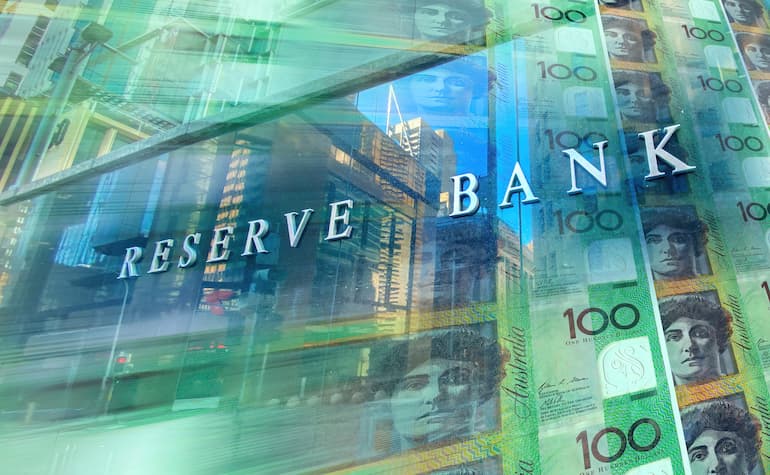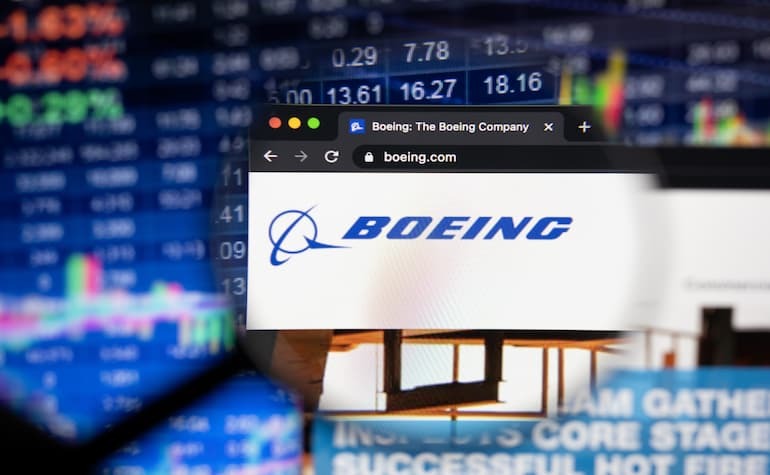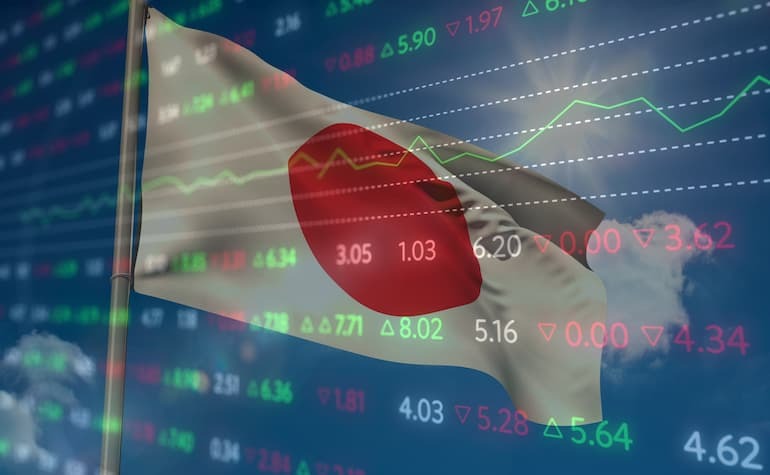市场资讯及洞察
%20(1).jpg)
本来今天想聊聊澳洲央行副行长最近公开谈到的有关澳洲有可能陷入经济低速增长的怪圈的问题,但是想想过去几篇文章都是说澳洲的,自己都觉得有点过于多了。但是很多内容不是我不想说,说国内经济情况,就怕你懂的,说欧美呢,估计大家也没啥兴趣看,说数字货币,也容易被黄标,导致我都不知道说什么好。那想来想去,最近看似比较大的事件就是美国国会关于预算用完,政府停摆的讨论的。
我们都知道,几乎每年来那么一次的停摆,今年又来了。这次停摆的时间再次打破历史记录,到上周末为止,已经超过38天了。没钱发工资、预算批不下来、议会还在吵。看着熟悉吧?因为这已经不是第一次了。过去10年,美国政府停摆过4次,每次都是在最后一刻“凑合”过关。从奥巴马到拜登,再到现在的老川,都一样。
有人说这就是美国政治的一部分,可在投资眼里,这更像是一种系统性疲态——就是那个世界最强信用体的裂缝,越来越多了。而且每次的解决方案都是很不要脸的继续提高债务上限,换句话说就是多印一点美元。
BUT, 就算再无赖,也得按照自己定的规矩来:
美国财政部的数字摆在那儿:
截至2025年10月底,美国的联邦总债务已经突破34.9万亿美元,还在以每秒钟大约4万美元的速度增加。光是2024财年,财政赤字就超过1.7万亿美元。而且更离谱的是,光“还利息”这一项,2025年预计就要花掉1.1万亿美元。什么意思?
就是美国政府借的钱,不是用来搞建设、科研或就业,而是越来越多地在还旧账的利息。这像不像信用卡欠多了,每月只够还最低额?加入一艘航母需要1000亿美元造价(不包括后期维护保养),那每年美国国债需要支付的利息就等于10艘航母的造价。
再看点细的。现在美国政府每收进1块钱税,大概要花掉1块三。财政支出和收入差了三成,完全靠举债撑着。以前大家信美国债是“无风险收益”,现在越来越多的投资机构开始犹豫了。这么每年收100花130,总不是个办法啊,这要是某一天出现点啥问题,是不是之前发美债的都有可能不算了?
那我们老百姓这么想,自然其他国家也会担忧。所以到2024年底,日本和中国这两大美国国债持有人,都在减持美债。日本在过去一年里减少了大概500亿美元持仓,中国更是创下了十年新低,只剩不到7700亿美元。
什么意思?全球主要买家在撤退。买这个美元纸币,太没有安全感了。买了也不是自己的,说查封就查封,说不能用就不能用。这算什么?当甲方还要这么受气。
讲真,这种对美元信用体系开始怀疑的局面在历史上是第一次。美国长期靠发债维持政府运转、靠美元霸权转嫁通胀。可现在,财政失衡、政治对抗、地缘风险……都在削弱那个“美元信仰”。
你想啊,美元强的底层逻辑是什么?是航母和F22,哦不对,说错,重来啊,美元的底层逻辑是什么?是信任。
大家相信美国政府永远能还钱、永远有能力印钱、永远不会倒。可现在连他们自己内部都吵得不可开交,国会关门、债务上限拉扯、甚至连总统都公开说“预算快撑不住”。美元的信任体系开始打折。
这时候你就得想:如果世界对美元信心动摇,那资金往哪跑?
答案其实很简单——黄金。(其实数字货币也起到了部分作用,但是因为过于分散,种类太多,导致资金无法集中)
别看黄金没利息、也不分红,但它有个谁都替代不了的特性:它不是谁欠谁的债。
你拿着美债,信的是美国政府的信用;你拿着黄金,信的是全人类几千年的共识。几千年前的埃及法老都爱这个,肯定没错。
最近几个月黄金的表现也印证了这点。
2024年年底,国际金价突破每盎司2400美元的新高,到了2025年10月,又一次冲上2500美元附近。你说这只是地缘政治?那只是表面。深层原因,是全球在寻找美元之外的安全锚。
咱看印度、土耳其、俄罗斯这些国家央行,去年都在疯狂买金。根据世界黄金协会的数据,2024年各国央行净增持黄金超1000吨,创下历史第二高。
这说明:连各国政府都不太敢再押宝美元。我的看法很简单:
黄金这波不是短线冲动,而是长期趋势在切换。
美元几十年的霸权红利,靠的是全球信任。可当信任开始松动,这个故事的主角可能要换了。除非美国再次把老二老三整服气了,之后各位小弟就会再次对大哥的地位不会质疑了。作为群众,咱们其实不希望看到这一天到来,不论结局谁赢,期间的不可控因素太多,一旦一个不小心,咱们就要见证咱们现代人类最后的辉煌了。
最后,我不建议大家一股脑地“梭哈黄金”,但起码你得让自己有点配置。就像以前老人说的——“仓里没点金,心里没底气。”
那具体咋搞?
你可以分几种方式:
1. 实物金:最笨但最踏实。买金币、金条,放保险箱。但是每次买卖差价几乎等于价格的10%,交易成本极高。
2. 纸黄金/ETF:操作灵活,适合不想拿实物的人。缺点是,手里没有那个沉甸甸的金子,总感觉只是个数字而已。
3. 黄金矿业股:风险高、弹性大,适合激进投资者。这个就看人品了,如果运气好,5倍10倍不是梦,当然,更大的机率是,没挖到,宝马变单车。
从长远来看,我个人倾向于使用自己资金10-30%购买ETF作为“稳健基础”。这不是投机,而是保险。你不指望它天天涨,但万一美元系统出事,它能救你一命。
再说一句现实点的。
现在美国债务增长速度远高于GDP增长。也就是说,他们靠印钱维持系统平衡。通胀虽然被压了一点,但核心通胀还在3%左右,远高于美联储2%的目标。
这意味着:美联储降息空间有限,财政却还要继续借钱。
那结果?
货币越来越多,信用越来越稀。
黄金,就是对冲这种“信用通胀”的最好工具。
有人问:“那美元真的会崩吗?”
麦哥的回答是:不会马上崩,但它会慢慢失去神圣光环。这不,11艘航母还是很厉害的。
历史上没有哪个超级货币能永远称王。英镑用了100多年从巅峰掉下来,美元可能也会经历同样过程。如果大家学过历史应该可以知道,黄金在1971年美元脱钩后,从每盎司35美元涨到现在的2500美元。它没变,是货币的实际价值在变。
所以,简单总结:
美国政府停摆也许能暂时拖过去,债务上限也许能再抬一点,但信任这种东西,一旦开始透支,就很难补回来。你不能指望一个连工资都快发不出的政府,永远当世界的“信用中心”。美元可能还会强一阵子,但我认为黄金这波超级大牛市,才刚刚开始。
各位读者,我不是劝你买金发财,而是提醒你:这个世界的信用体系,正在慢慢换轨。
写完以后,赶紧用上网乘着黑五买一堆没用的垃圾。虽然咱们知道黄金美丽,价格长虹,但是咱日常生活,还是纸币方便啊。
生活还得过,但是咱们脑子不能糊涂。对吧?
免责声明:GO Markets 分析师或外部发言人提供的信息基于其独立分析或个人经验。所表达的观点或交易风格仅代表其个人;并不代表 GO Markets 的观点或立场。
联系方式:
墨尔本 03 8658 0603
悉尼 02 9188 0418
中国地区(中文) 400 120 8537中国地区(英文) +248 4 671 903
作者:
Mike Huang | GO Markets 销售总监


Crude Oil has always been one of the most popular and highly traded markets for CFD traders whether it is WTI or Brent, especially recently as geopolitical and economic forces have seen its price fluctuate from extreme lows to extreme highs. It’s easy to see why, Oil is a bellwether for the health of the global market, oil greases the wheels of global commerce and with CFDs it’s possible to take a position in this exciting market, whether you think the price will head up or down. In this CFD Oil trading Article we will look at the following: How to use CFDs to trade oil Fundamental forces that drive the price of oil Popular technical strategies for trading oil CFDs How to use CFDs to trade oil CFDs or Contracts For Difference allow you to speculate on the price of oil, without owning the underlying asset.
A spot oil CFD tracks the price of the spot market being the cleanest and most efficient way to speculate on the price of oil. They also allow you to take a position in both directions, you would enter a buy (Long) positions if you believed the price will rise, or a sell (Short) position if you believe the price will fall. With Long positions you are looking to buy and sell at a higher price at a later time to profit on the trade.
With a Short position you are selling with the view to buy back at a later time to profit on the trade. At GO Markets we offer our clients the worlds most popular oil trading platform in Metatrader 4 and 5, another advantage to these CFD trading platforms is the ability to automate oil trading strategies. Other advantages to trading oil CFDs with GO Markets: Trade 23 hours a day on WTI oil, 21 hours a day on Brent oil, unlike an ETF or oil company listed on a stock exchange that is only open while that stock exchange is open.
Leverage – the margin required to open the trade will be a fraction of the face value of the position depending on what leverage you are comfortable with. Flexibility in position sizing starting from 0.1 lot ($0.10 USD per point movement in oil) unlike oil futures which have rigid contract sizes. Rolling contract, no expiries such as in options or futures to worry about.
To Enter a position in Metatrader, you would bring up a deal ticket by clicking “New Order” then select your position size, any Stop Loss or Take Profit levels you want the position to automatically close at and hit Buy or Sell. As with any instrument, make sure you are familiar with the lot sizing. 1 standard lot in oil (USOUSD and UKOUSD) is 100 barrels, or $1 USD a point so make sure you set the volume to a level commensurate to your account size and risk appetite. Now, the next question is how you decide on a buy or sell, let’s look at the fundamentals of what drives oil and some technical analysis you can use to answer this question.
Fundamental forces that drive the price of oil Both WTI oil (USOUSD) and Brent Oil (UKOUSD) are highly correlated and will both be referenced as “oil” in the below. While no one reason can be fully attributed to movements in the price of oil, there are an important few fundamental drivers that will influence the price and whose relationship has been time tested. None of these on their own should be used as a sole reason to enter a position, but having the fundamentals on your side will certainly give you an advantage.
The main fundamental drivers in my experience are The perceived health of the global economy OPEC+ production cuts or increases Geopolitical issues The perceived health of the global economy Oil is the driver of commerce, it is needed for the transport and manufacturing of goods and getting people around. If economic conditions are deteriorating, it means less economic activity and the need for less oil sending the price down. A global economy which is seen as “hot” means more economic activity and more demand for oil, seeing it’s price increase.
A clear chart to see this is the price of oil as compared to the US 10-year bond yield over the years. You can see the price of oil and the yield are highly correlated, this is due to yields going up when the economy is “hot” and yields falling when the economy enters a period of contraction, similar price drivers to oil. The black line is WTI oil price, the orange US 10-year yields going back 10 years.
Source: tradingview.com OPEC+ production cuts or increases The Organization of the Petroleum Exporting Countries (OPEC) is a cartel of leading oil-producing countries formed in order to collectively influence the global oil market. OPEC started with a handful of Middle Eastern oil producers in 1960, and has since grown to 24 members in OPEC+. Even thought the USA is currently the worlds top oil producer, OPEC+ countries as a whole still dominate global oil supply and decisions made by the cartel can have a dramatic influence on the price of crude oil.
Market share of oil producing nations: Source: gisreportsonline.com OPEC+ hold regular meetings during the year, normally the expected result is well telegraphed, but sometimes there can be a surprise, such as at their latest meeting on Sunday April 2 nd, 2023, where a surprise production cut was announced, seeing the price of oil gap significantly higher on Mondays open, showing oil traders to always approach these meetings with caution. Geopolitical issues The last three years has seen some very influential geopolitical events, or “black swans” and oil being closely tied to the health of the global economy has seen some very big moves on the back of these events. The Pandemic and its related lock downs and slowing of global commerce saw the price of oil slump to all time lows, followed by the war in Ukraine which saw oil jump to multi year highs on the fear of supply disruptions (Russia is the second biggest oil producer in the world) The chart below illustrates this: Oil traders especially need to be aware of geopolitical risks as the above chart shows.
Technical strategies for trading oil CFDs While having a good understanding of the fundamentals (in my opinion) is important to help you choose the best trades most traders will use a combination of technical analysis and fundamentals with the aim for higher probability outcomes in their trades. Some traders will use technical analysis exclusively without any interest in the fundamental drivers using things such as RSI oscillators, support and resistance areas and trend lines solely to decide on their trade direction. Which option is best is solely up to the trader, their time frames for the trades and risk appetite, all can work, and all can fail neither option can be seen as “better” than the other, it all depends on the individual trader.
Technical analysis is an art in itself and there is a lot to learn on this subject, I encourage anyone interested to research the many weird and wonderful technical analysis strategies that are documented online. But let’s take a look at a popular technical indicators that oil traders use to make their trades. Support and Resistance Support and resistance are one of the most widely used and accurate (when used correctly) technical indicators that can be used by traders.
Support and Resistance areas are points in the market where the price is held from going lower (Support) or going higher (Resistance), these are areas where buyers or sellers are entering the market as they see value in the asset at that price. These levels can last a long time or be temporary and can be used to predict turn arounds in the market, or a break of these levels could indicate a further push in that direction. Oil is also particularly sensitive to psychological levels around “big figures” or rounded number, e.g. 79.00 and 74.00 As can be seen on the chart below.
Hopefully this article has given you an interest to learn more about trading oil with CFDs. Feel free to contact the GO Markets team if you have any questions on trading oil CFDs and opening an account with us.


The Australian interest rate is currently at 3.85% and the most recent consumer price index (CPI) released at 6.8% which indicates slightly higher than expected inflation growth (expectation was 6.4% with previous data at 6.3%). This puts more focus on the upcoming interest rate decision from the Reserve Bank of Australia (RBA). While further rate hikes could apply added pressure onto the economy as households face increasing mortgage repayments, on the other hand, the series of previous rate hikes have not signaled that inflation growth is likely to slow down sustainably towards the RBA’s target level.
Market analysts are split between a hawkish hold (keeping rates at 3.85% while signaling a possible hike in the 3rd quarter, depending on further data) or continuing with another hike of 25bps to 4.1%. With the AUDUSD currently trading along the 0.66 price level, a hawkish interest rate decision from the RBA could see the AUDUSD break above the resistance at 0.6650, formed by the 200 moving average. The expected price action could be similar to that seen following the RBA’s surprise decision to hike rates by 25bps at the May meeting.
In this scenario, the AUDUSD could trade toward the immediate key resistance level of 0.68 with further sustained upside likely to depend on the volatility of the DXY.


Charles Schwab Corporation (NYSE: SCHW) announced the latest financial results for the first three months of 2023 ended March 31, before the opening bell on Wall Street on Monday. Company overview Founded: 1971 Headquarters: Westlake, Texas, United States Number of branches: 400 Number of employees: 35,300 (as of December 2022) Industry: Financial services Key people: Charles R. Schwab (co-chairman), Walter W.
Bettinger (co-chairman & CEO) The results The company reported revenue that fell slightly short of analyst expectations at $5.116 billion vs. $5.134 billion estimate. Earnings per share reported at $0.93 per share for the quarter vs. $0.90 per share expected. CEO commentary ''When I drafted my first letter to stockholders 15 years ago in the middle of the financial crisis, I outlined four factors that helped distinguish Schwab from other financial institutions during a very challenging time for global markets: a strong financial foundation, a client-centric strategy, a disciplined operating approach, and a diversified business model.
These characteristics remain every bit as relevant to our story today. We continue to consistently manage the business in a conservative manner, with an unwavering long-term orientation. Our ongoing commitment to this consistency of mission, including our “Through Clients’ Eyes” strategy, highlights why we maintain the ability to meet the needs of individual investors and the advisors who serve them through various environments,'' CEO, Walter W.
Bettinger said in a letter to shareholders. ''While equity markets rebounded from year-end 2022 levels, investor sentiment remained bearish – especially following the onset of the banking industry turmoil in early March. Fixed income markets also reflected growing fears of an economic downturn as the 10-year U.S. Treasury yield declined approximately 50 basis points from its intra-quarter peak to end March just under 3.50%.
Through the various ups and downs to start the year, Schwab remained a trusted partner to investors. During the quarter, clients opened over 1 million new brokerage accounts and entrusted us with $132 billion of core net new assets – including over $53 billion in March alone. While Investor Services gathered approximately $60 billion during the period, the Advisor Services segment posted a record first quarter with over $71 billion in net flows and attracted 70 transitioning advisor teams.
These near-record inflows across both our primary businesses represents an annualized organic growth rate north of 7% and helped push total client assets to $7.58 trillion at quarter-end.'' Shares closed up by +3.94% on Monday at $52.73 a share. Stock performance 1 month: -6.55% 3 months: -36.81% Year-to-date: -37.02% 1 year: -30.03% Charles Schwab Corporation price targets Barclays: $56 Morgan Stanley: $65 Citigroup: $65 Credit Suisse: $68 Goldman Sachs: $75 Deutsche Bank: $83 Piper Sandler: $95 JP Morgan: $97 Charles Schwab Corporation is the 147 th largest company in the world with a market cap of $95.10 billion, according to CompaniesMarketCap. You can trade Charles Schwab Corporation (NYSE: SCHW) and many other stocks from the NYSE, NASDAQ, HKEX, ASX, LSE and DE with GO Markets as a Share CFD.
Sources: Charles Schwab Corporation, TradingView, MarketWatch, MetaTrader 5, Benzinga, CompaniesMarketCap, Wikipedia


The Boeing Company (NYSE: BA) announced Q1 financial results before the market open in the US on Wednesday. World’s largest aerospace company posted mixed results. Let’s take a close look at how it performed.
Company overview Founded: July 15, 1916 Headquarters: Arlington County, Virginia, United States Number of employees: 156,000 (2022) Industry: Aerospace Key people: Dave Calhoun (President and CEO), Larry Kellner (Chairman) The results Boeing reported revenue of $17,921 billion for the quarter, topping analyst estimate of $17.516 billion. Revenues were up by 28% compared to the same period last year. The company reported loss per share of -$1.27, which exceeded analyst estimate of -$1.073 loss per share.
CEO commentary "We delivered a solid first quarter and are focused on driving stability for our customers," Dave Calhoun, CEO of Boeing said in a letter to shareholders. "We are progressing through recent supply chain disruptions but remain confident in the goals we set for this year, as well as for the longer term. Demand is strong across our key markets and we are growing investments to advance our development programs and innovate strategic capabilities for our customers and for our future," Calhoun concluded. The latest results had a positive impact on the share price.
The stock was up by around 2% on Wednesday at $207.62 a share. Stock performance 1 month: +0.94% 3 months: -1.29% Year-to-date: +10.21% 1 year: +35.91% Boeing price targets Susquehanna: $260 Bernstein: $252 Credit Suisse: $220 Northcoast Research: $180 Cowen & Co.: $230 Boeing is the 95 th largest company in the world with a market cap of $126.05 billion, according to CompaniesMarketCap. You can trade The Boeing Company (NYSE: BA) and many other stocks from the NYSE, NASDAQ, HKEX, ASX, LSE and DE with GO Markets as a Share CFD.
Sources: The Boeing Company, TradingView, MarketWatch, MetaTrader 5, TipRanks, CompaniesMarketCap, Wikipedia


The Bank of Japan is due to hold its first monetary policy meeting under new Governor Ueda on the 29th of April 2023. Since his appointment, Governor Ueda has frequently indicated that the BoJ will continue with its current easing stance on monetary policy with targets for long and short-term interest rates. Although headline and core inflation runs above 3% and the 10Y JGB yields have again climbed close to the ceiling at 0.50%, it is unlikely that Gov Ueda would introduce a widening of the Yield Curve Control (YCC) at this meeting.
However, while a lack of action from the BoJ is widely expected, this could still result in a further weakening of the Japanese Yen across the board. The USDJPY currently trades along the 134 price level, with the upside capped by the 135 resistance level which coincides with the 61.8% Fibonacci retracement level from the longer term. A weakening of the Yen could see the USDJPY break above the resistance level and climb higher toward the next key resistance level at 138.
This potential move higher is also signaled by the cross-over on the MACD indicator. Alternatively, if the BoJ surprises markets by announcing a widening of the YCC or an adjustment to the current monetary policy, this could result in a sharp strengthening of the Japanese Yen. In this scenario, the GBPJPY could reverse strongly from the resistance area of 168 to trade significantly to the downside toward the immediate support level at 165.50 which aligns with the 23.6% Fibonacci retracement level.


Bank of England announced the latest policy decision on Thursday, raising interest rates for the 12th consecutive time from 4.25% to 4.5%, which was in line with expectations. Bank of England’s Monetary Policy Committee voted by a majority of 7-2 to raise interest rates to 4.5%. Two members voted to maintain the interest rate unchanged at 4.25%.
The current interest rate is at its highest level since October 2008. Inflation UK’s annual inflation rate decreased from 10.4% to 10.1% in April and remains high. The bank expects inflation to continue falling in Q2 and in the near term. ''CPI inflation is expected to fall sharply from April, in part as large rises in the price level one year ago drop out of the annual comparison.
In addition, the extension in the Spring Budget of the Energy Price Guarantee and declines in wholesale energy prices will both lower the contribution from household energy bills to CPI inflation. However, food price inflation is likely to fall back more slowly than previously expected. Alongside news in other goods prices, this explains why the Committee’s modal expectation for CPI inflation now falls back more slowly than in the February Report.'' Economic outlook As for the economy, the central bank expects it to remain flat but there are signs potential growth. ''UK GDP is expected to be flat over the first half of this year, although underlying output, excluding the estimated impact of strikes and an extra bank holiday, is projected to grow modestly.
Economic activity has been less weak than expected in February, and the Committee now judges that the path of demand is likely to be materially stronger than expected in the February Report, albeit still subdued by historical standards. The improved outlook reflects stronger global growth, lower energy prices, the fiscal support in the Spring Budget, and the possibility that a tight labour market leads to lower precautionary saving by households.'' The unemployment is expected to remain below 4% until the end of next year. Market reaction The Pound was weaker against the US dollar on Thursday, down by around -0.93% at 1.25089.
FTSE100 was down by -0.14% at 7733.41. The next Bank of England rate decision will be on 22 nd June. Source: Bank of England, Trading Economics, MetaTrader 5

